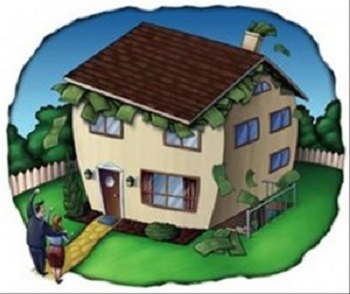Reverse Mortgages
 A recent article titled Reverse Mortgage Lenders May Be the Big Bad Wolf by Craig Malisow focuses on a sleazy reverse mortgage company. It also focuses on reverse mortgages. With baby boomers getting older and income for retirement a concern, let’s not be in the dark about reverse mortgages.
A recent article titled Reverse Mortgage Lenders May Be the Big Bad Wolf by Craig Malisow focuses on a sleazy reverse mortgage company. It also focuses on reverse mortgages. With baby boomers getting older and income for retirement a concern, let’s not be in the dark about reverse mortgages.
Reverse mortgages—they are the last thing that your clients would ever want, and they are the first thing they need as a last resort. Such are the opposing, yet surprisingly complementary, views of what is still for many a highly controversial topic. Our mothers used to warn: all that glitters isn’t gold.
You’ve seen the ads for the financial planning company who interviews an individual in a taxi worried about his financial future. The interviewee says he has a life expectancy of 24 years, but only enough retirement savings for 15 years. Even with these worries in mind, adults who are spending less than the previous year continues to decline from 57% in 2009 to 29% in 2014.
One consequence of worrying about making ends meet has been an increase in Americans over 62 taking out reverse mortgages. The number of reverse home equity conversion mortgage (HECM loans) made in each federal fiscal year peaked with the housing crisis in 2007-2009 in FY 2009 at 114,692. Loans fell off to FY 2012 at 54,822, but seem to be on the rise again. We are currently at or above last year’s 60,091.
What are Reverse Mortgages?
“A reverse mortgage is a loan against home equity that doesn’t have to be repaid until you move, sell your home or die. You can receive a lump sum, a line of credit, monthly payments or a combination. To qualify, you must be 62 or older. (If the home is owned jointly, both owners must be at least 62.) You can borrow an amount based on your home’s value, current interest rates, and your age.”
To apply for a reverse mortgage was easy before 2015. But that has changed for many, as new regulations went into effect in 2015 that will require individuals that opt for a reverse mortgage to have financial planner counseling.
It’s easy to Google and find the Pros for reverse mortgages, but not as easy to get the cons. The Pros:
- You can stay in your own home and improve your finances, assuming you have equity in your home.
- It’s flexible. You can have a reverse mortgage tailored to your financial needs or financial planner’s recommendations
- Low risk of default. You must keep up with property taxes, upkeep, and insurance.
- The money you take out is tax-free.
- The mortgage cannot exceed the value of your home.
- No restriction on how you use the funds extracted.
The Cons:
- The mortgage rate is adjustable. Adjustable rate loans can be expensive if rates go up.
- There are high origination fees.
- There are no monthly payments, but the size of the mortgage compounds.
- The interest is not deductible
- The estate must sell the home when the mortgagees die.
- There may be no equity left for your heirs.
- The homeowner may get locked into keeping the house when a better option would be to sell and move into more affordable housing.
- The homeowner must keep up with property taxes, upkeep, and insurance.
Here’s an example of a couple, both over 62 owning a home valued at $425,000 and two mortgages totaling 200,000. The maximum loan amount may be 48% or 204,000. That’s enough to pay off existing mortgages and save $2,000 in mortgage payments, but there would be little cash available. That would leave the couple with $24,000 in savings per year less property taxes, upkeep, and insurance. That extra savings could mean the difference between just getting by and a comfortable retirement.
The reverse mortgage certainly is a viable option for some older Americans, especially if you are not considering moving. Others believe that a reverse mortgage is a little like a car airbag. It’s nice to know it’s there. But if it ever has to be used, the driver’s already in trouble.
Terra Firma Property Solutions, LLC is a professional, full-service real estate solutions firm.
We buy and sell properties throughout the greater Kansas City area. We specialize in buying distressed homes, then renovating and reselling them to home buyers and landlords. Terra Firma Property Solutions: excited to be part of the economic rejuvenation of Kansas City and its surrounding areas.
Call us today at (816) 866.0566
